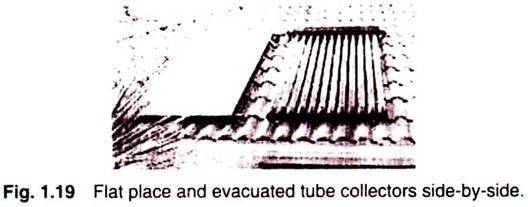ADVERTISEMENTS:
In this article we will discuss about the endogenic and exogenic geomorphic processes.
The earth’s surface is being continuously subjected to external forces originating within the earth’s atmosphere and by internal forces from within the earth. The external forces are known as exogenic forces and the internal forces are known as endogenic forces.
The actions of exogenic forces result in wearing down (degradation) of relief/elevations and filling up (aggradation) of basins/depressions, on the earth’s surface. The phenomenon of wearing down of relief variations of the surface of the earth through erosion is known as gradation.
ADVERTISEMENTS:
The endogenic and exogenic forces causing physical stresses and chemical actions on earth materials and bringing about changes in the configuration of the surface of the earth are known as geomorphic processes.
Diastrophism and volcanism are endogenic geomorphic processes. Weathering, mass wasting, erosion and deposition are exogenic geomorphic processes. Any exogenic element of nature (like water, ice, wind etc.,) capable of acquiring and transporting earth materials can be called a geomorphic agent. When these elements of nature become mobile due to gradients, they remove the materials and transport them over slopes and deposit them at lower level.
Gravity besides being a directional force activating all downslope movements of matter also causes stresses on the earth’s materials. Indirect gravitational stresses activate wave and tide induced currents and winds. Without gravity and gradients there would be no mobility and hence no erosion, transportation and deposition are possible.
So, gravitational stresses are as important as the other geomorphic processes. Gravity is the force that is keeping us in contact with the surface and it is the force that switches on the movement of all surface material on earth. All the movements either within the earth or on the surface of the earth occur due to gradients—from higher levels to lower levels, from high pressure to low pressure areas etc.
Endogenic Processes:
The energy emanating from within the earth is the main force behind endogenic geomorphic processes. This energy is mostly generated by radioactivity, rotational and tidal friction and primordial heat from the origin of the earth.
Exogenic Processes:
The exogenic processes derive their energy from atmosphere determined by the ultimate energy from the sun and also the gradients created by tectonic factors. Gravitational force acts upon all earth materials having a sloping surface and tend to produce movement of matter in down slope direction. Force applied per unit area is called stress. Stress is produced in a solid by pushing or pulling. This induces deformation.
Forces acting along the faces of earth materials are shear stresses (separating forces). It is this stress that breaks rocks and other earth materials. All the exogenic geomorphic processes are covered under a general term, denudation.
The word ‘denude’ means to strip off or to uncover. Weathering, mass wasting/ movements, erosion and transportation are included in denudation. As there are different climatic regions on the earth’s surface owing to thermal gradients created by latitudinal, seasonal, land and water spread variations, the exogenic geomorphic processes vary from region to region.
ADVERTISEMENTS:
Within different climatic regions there may be local variations of the effects of different climatic elements due to altitudinal differences, aspect variations and the variation in the amount of insolation received by north and south facing slopes as compared to east and west facing slopes.
Further, due to differences in wind velocities and directions, amount and kind of precipitation, its intensity, the relation between precipitation and evaporation, daily range of temperature, freezing and thawing frequency, depth of frost penetration, the geomorphic processes vary within any climatic region. The effects of most of the exogenic geomorphic processes are small and slow and may be imperceptible in a short time span, but will in the long run affect the rocks severely due to continued fatigue.
Biological Activity and Weathering:
Biological weathering is contribution to or removal of minerals and ions from the weathering environment and physical changes due to growth or movement of organisms. Burrowing and wedging by organisms like earthworms, termites, rodents etc., help in exposing the new surfaces to chemical attack and assists in the penetration of moisture and air.
Significance of Weathering:
Weathering processes are responsible for breaking down the rocks into smaller fragments and preparing the way for formation of not only regolith and soils, but also erosion and mass movements. Biomes and biodiversity is basically a result of forests (vegetation) and forests depend upon the depth of weathering mantles. Weathering of rocks and deposits helps in the enrichment and concentrations of certain valuable ores of iron, manganese, aluminium, copper etc., which are of great importance for the national economy.
